SpaceX Falcon 9 rocket and Dragon resupply spaceship explode about 2 minutes after liftoff from Cape Canaveral Air Force Station in Florida on June 28, 2015. Credit: Ken Kremer/kenkremer.com
Story and photos expanded[/caption]
KENNEDY SPACE CENTER, FL – The root cause of Sundays (June 28) devastating launch failure of the commercial SpaceX Falcon 9 rocket is “still unknown” says SpaceX CEO and founder Elon Musk, following the loss of the NASA contracted resupply mission carrying crucial gear and research experiments to the crew serving aboard the Earth orbiting International Space Station (ISS).
Meanwhile, search and recovery teams from SpaceX and the Coast Guard are scouring the ocean and beaches along the Florida Space Coast for any signs of potentially dangerous Falcon rocket debris that rained down from the sky into the Atlantic Ocean after the sudden explosion unexpectedly destroyed the vehicle barely two minutes after a sun drenched liftoff from Space Launch Complex 40 at Cape Canaveral Air Force Station in Florida at 10:21 a.m. EDT.
All appeared normal as the Falcon 9 booster and Dragon resupply spaceship were streaking skywards through majestically blue Florida skies when catastrophe struck at approximately 148 seconds after blastoff and the rocket exploded violently- utterly destroying the rocket ship and its two ton load of critical supplies heading to the astronauts and cosmonauts living on board the ISS.
The upper stage appeared to break up in flight as the nine first stage Merlin 1D engines were firing as planned and the rocket was arcing over.
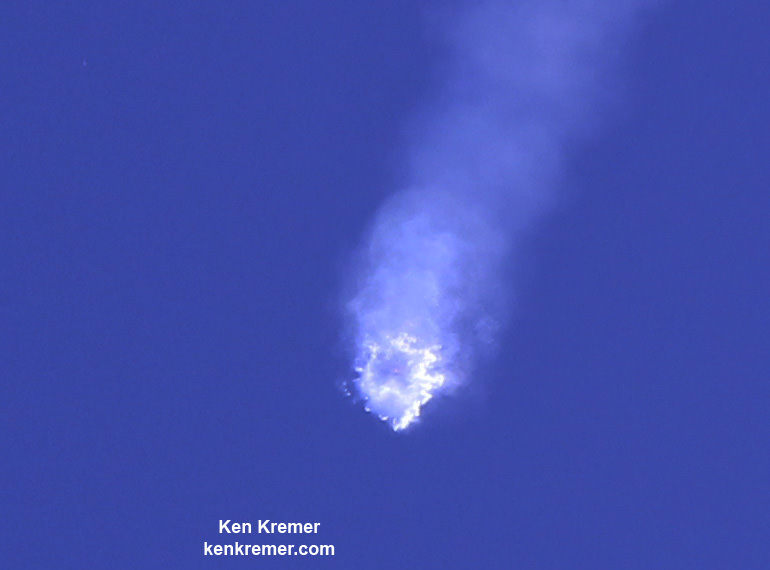
But why that happened and the vehicle disintegrated in mere seconds is still a mystery which will take some time to resolve.
“Cause still unknown after several thousand engineering-hours of review. Now parsing data with a hex editor to recover final milliseconds,” tweeted SpaceX CEO Elon Musk.
Although the cause is unknown, Musk also announced that the failure might be related to a problem with the Falcon 9 upper stage. since the first stage engines were still firing as planned.
“There was an overpressure event in the upper stage liquid oxygen tank. Data suggests counterintuitive cause,” tweeted Musk.
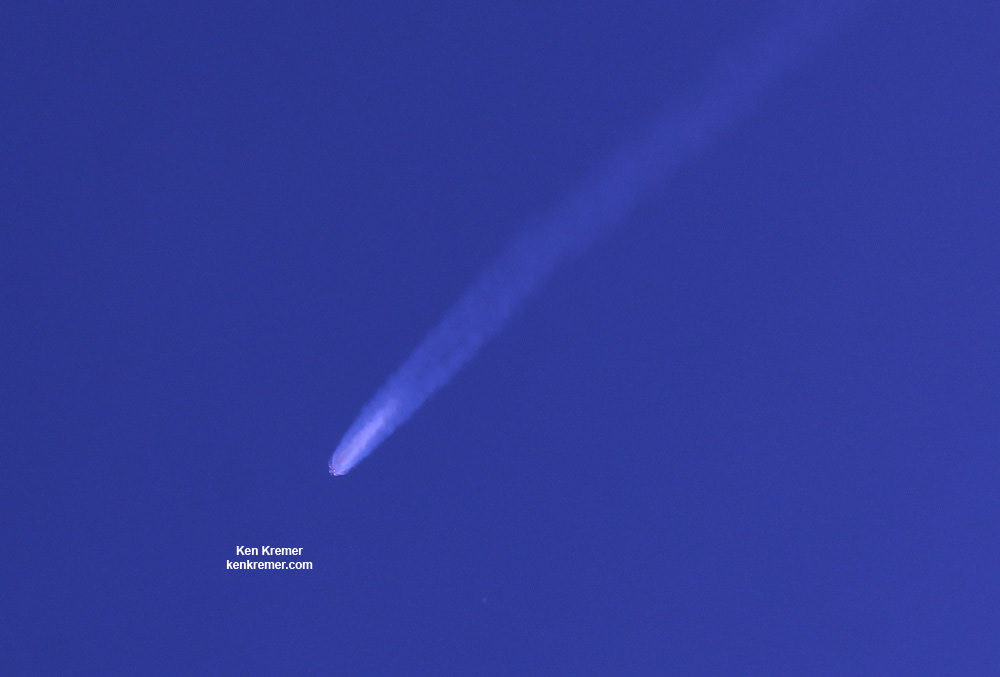
The rocket was traveling about 5000 km/h at an altitude of 45 kilometers at the time of the mishap.
“Falcon 9 experienced a problem shortly before first stage shutdown. Will provide more info as soon as we review the data,” tweeted SpaceX CEO Elon Musk soon after the explosion.
The pressurized section of the Dragon was packed with over 4,000 pounds of research experiments, spare parts, gear, high pressure supply gases, food, water and clothing for the astronaut and cosmonaut crews comprising Expeditions 44 and 45 on the ISS.

Sunday’s launch was the 19th launch of the Falcon 9 rocket and the first failure after 18 straight successes.
SpaceX formed a failure investigation board immediately following the launch failure of the SpaceX Commercial Resupply Services 7 (CRS-7) mission bound for the ISS. The FAA and NASA will assist in the investigation.
The launch was the sixth for SpaceX this year, which had been picking up its launch pace dramatically compared to 2014.
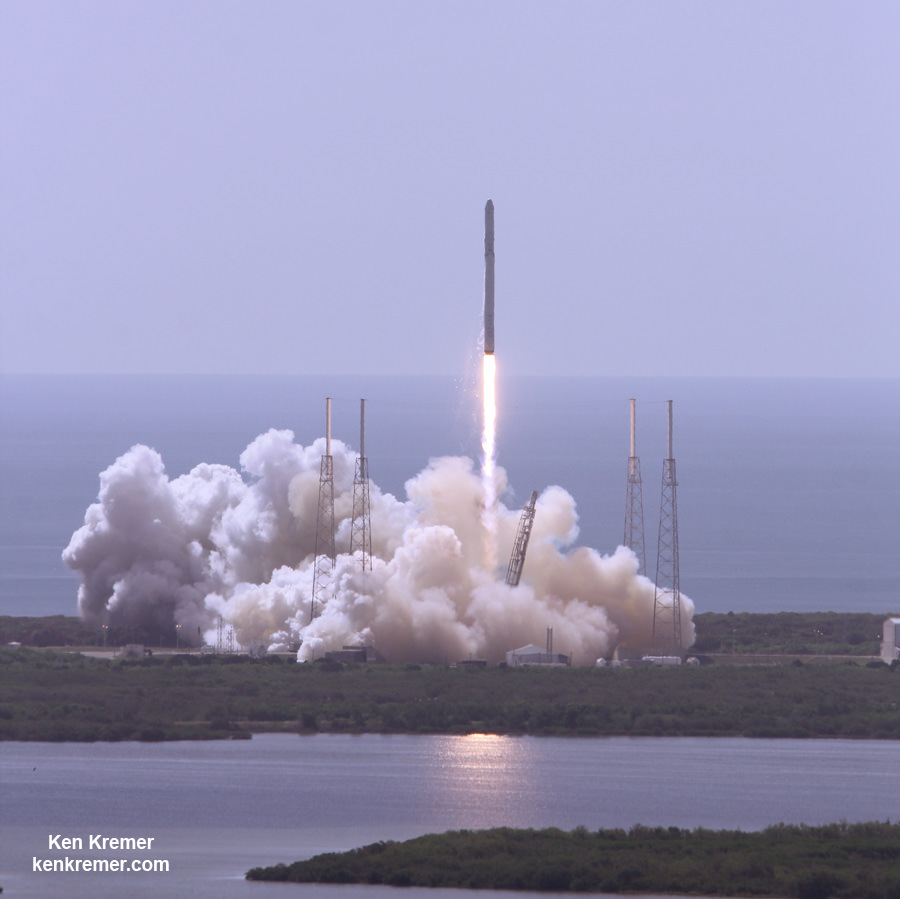
It was the third launch failure of a cargo delivery run to the space station in the past half year -including both American and Russian rockets.
The Orbital Sciences Antares/Cygnus Orb 3 mission exploded in a massive an frightening fireball on October 28, 2014 which I witnessed from the press site from NASA Wallops in Virginia.
The Russian Soyuz/Progress 59 mission failed after the cargo vessel separated from the booster rockets third stage and spun wildly out of control in April 2015 and eventually crashed.
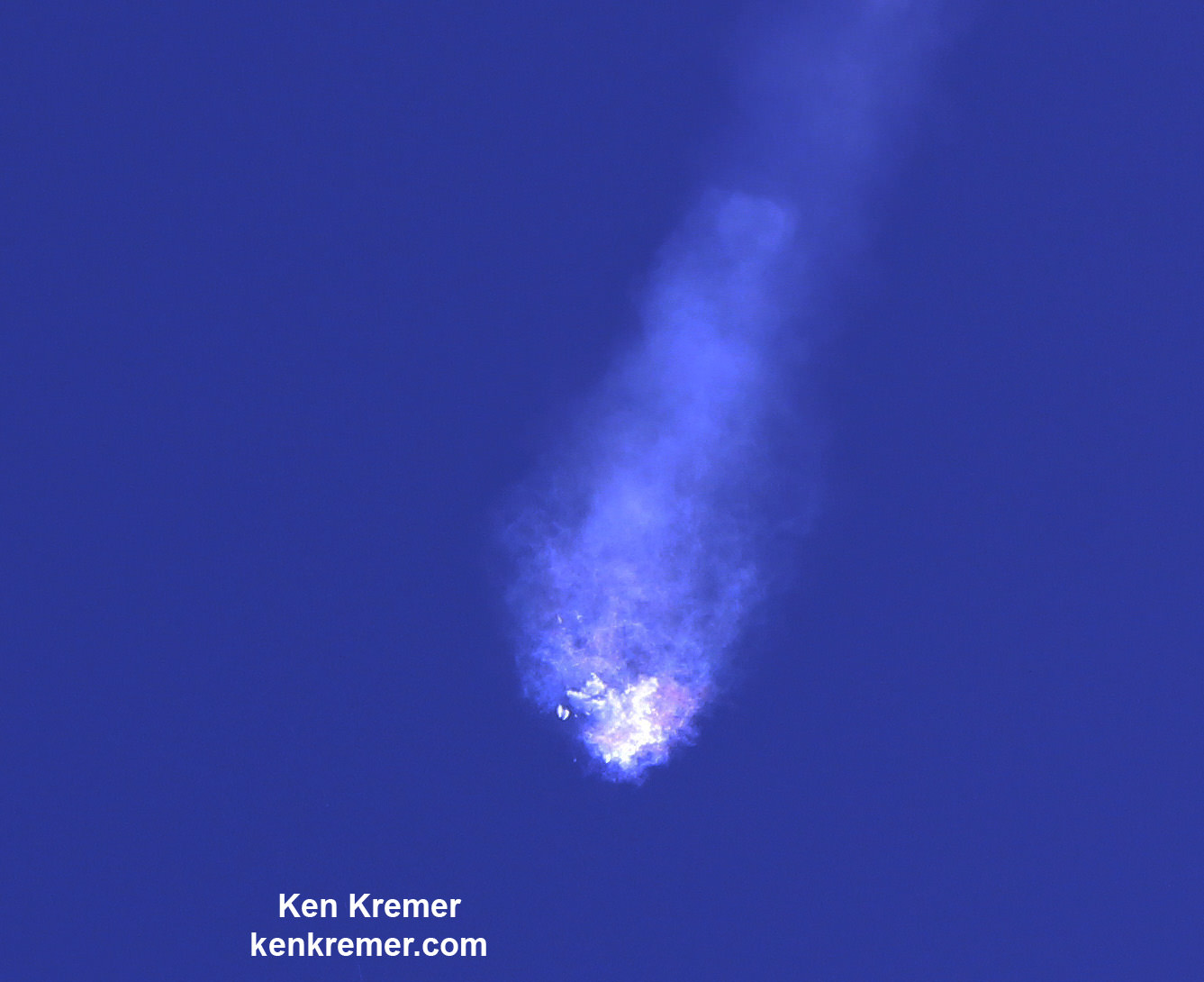
Myself and other members of the media were watching and photographing the SpaceX Falcon 9 launch from atop the iconic Vehicle Assembly Building (VAB) when the launch mishap occurred.
See a galley of my launch failure explosion photos herein.
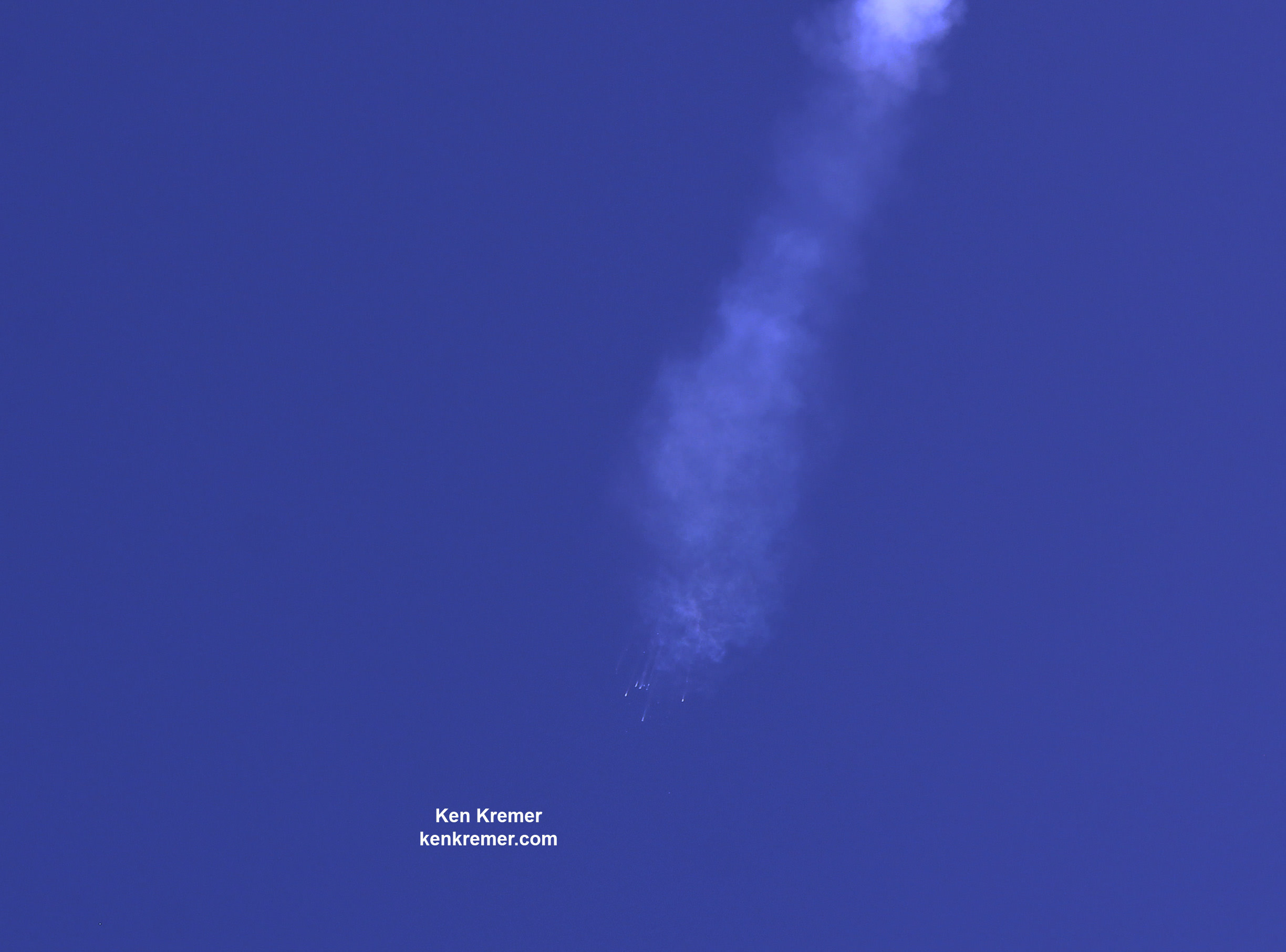
Watch for Ken’s continuing onsite coverage of the CRS-7 launch from the Kennedy Space Center and Cape Canaveral Air Force Station.

Stay tuned here for Ken’s continuing Earth and planetary science and human spaceflight news.

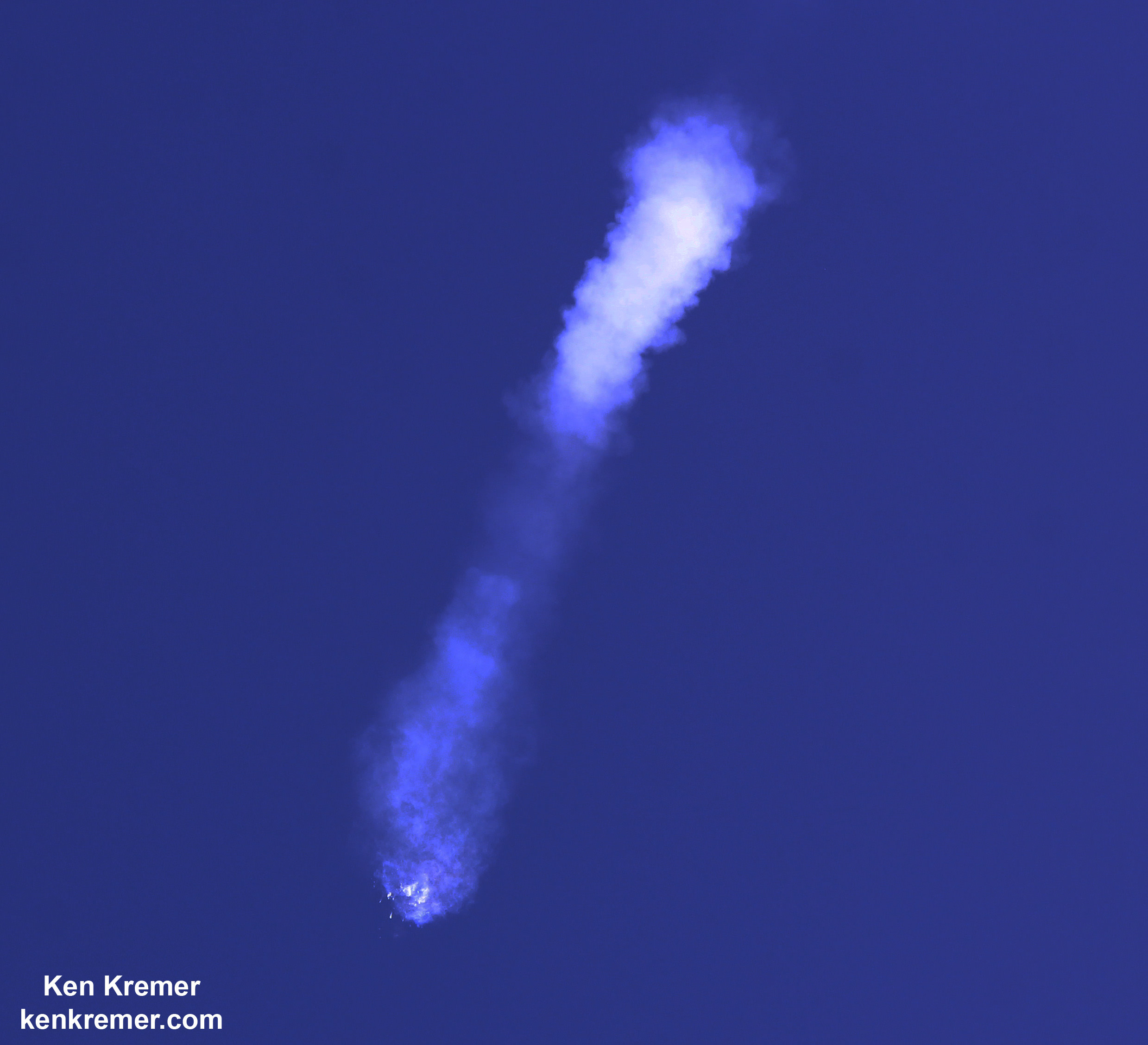
As of today we still don’t know the exact cause. Did the crew capsule survive? Does it have a “black box”? Physics of high speed flight is amazing because the well built ship dissolved within seconds.
It was an unmaned rocket so there is no crew, but the capsule was where the problem started. So no, the capsule didn’t survive.
I wonder what the cost breakdown is between the std. resupply Dragon and the Manned version with 8X Super-Draco engines? In this case, I doubt the final velocity for the second stage was high enough for the Super-Dracos to fire and make up the difference to achieve orbit. But then again, the capsule might have survived with the payload intact making the extra cost worthwhile?
Maybe it DID survive? That would be good, but I doubt the parachutes deployed, haven’t heard, making the subject moot.
Pretty sure they didn’t deploy. And without, I don’t know if the Dragon could survive touchdown intact. And if the water gets inside, it won’t swim.
Also, I doubt a black box would help, as they got telemetry from the Dragon even after the breakup – what would the black box have that they didn’t already have? Telemetry from the Falcon, now, that didn’t (so I understand) survive the breakup, which is why the quip about the hex editor – to understand the data frames that didn’t finish transmitting, so the standard decoding routines couldn’t. Even without working anywhere near rockets, I’ve had to do similar things often enough. In this case, that really can only be the final milliseconds.
Somehow, this reminds me when that uni computing centre was burned down here in western Europe, and the last log messages making it out told of rather high temperatures (fortunately, they didn’t need to rely on those to catch the perp). The data won’t say “X went wrong”. All it can say is “Unusual thing A happened first, then unusual thing B” and so on, and from that you try to reason out what kind of cause could have been behind that, and then how that could have happened, what might have been the original thing going wrong, why that could go wrong, what related data you might expect and then actually find, what sort of experiment might tell you more, …
Space flight is fraught with peril. In the early days of lunar launches, I believe the first 8 flights to the moon by US and Soviets ended in catastrophe. Yet, seems odd the last 3 flights to ISS all ended abruptly…perhaps the Illuminati would like to voice their opinion about what’s going on. 😉
Last 2 in a row failed. The third failed 8 months ago. 4 were successful in between. But no failure from 1998 to 2011, and 4 failures since then with 3 different systems looks strange. But it is hopefully just random, having many independent causes, and the success rate will probably stay at about 80/84 (5%), which is really good for cargo considering the brand new and the ancient launchers and space vehicles used.
https://en.wikipedia.org/wiki/List_of_unmanned_spaceflights_to_the_International_Space_Station#Current_and_completed_spaceflights
Just speculating, but an oxygen tank overpressure event sounds suspiciously like the Apollo 13 explosion. What else than a fire inside the tank can cause overpressure?